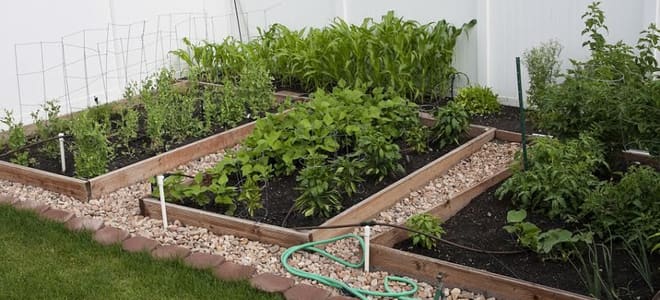Staging your home is a critical step in getting it sold, but all the recommended updates and upgrades can get pricey. Thankfully, there are tricks you can use to make your home look bigger, better, and brighter, without spending a dime.
1. Fix up your floors
Don't want to pay to replace or refinish your floors? No prob. Grab a brown crayon to fill in divots. A one-to-one mix of olive oil and vinegar rubbed directly on scratched areas will also help make it look new. You can also use canola if you don't have olive, but then use a one-part vinegar, three-part oil mixture. Or, try this hack that uses walnuts to fix scratches. No, seriously.
Floors look great but don't sound so hot? "Fix
creaky wood floors with a generous dusting of baby powder," said
One Crazy House. "Work it into the cracks until the floor is no longer noisy."
2. Make it sparkle
Presumably, you already have cleaning supplies, sponges, and paper towels in the house. Now all you need is some elbow grease to make your home look shiny and new.
When selling your home, you need to take the cleaning beyond your typical weekly run-through. Think "Spring cleaning" turned up a notch or two. Remember that potential buyers will be looking everywhere, including inside drawers and cabinets. Make sure they're crumb-free and well organized. They may also open your refrigerator. While this can seem intrusive, you don't want to give them a reason to walk away, so make sure to tidy up the inside, wipe up any spills, throw away rotten food, and put a nice big box of Baking Soda in there to absorb any leftover smells.
3. Let the light in
Everyone is looking for "natural light," so show off what you've got by opening up those blinds and drapes. Did you just reveal a bunch of dirty windows and sills? Ewww. Grab that cleaning spray and make them shine. An old toothbrush is a great way to get gunk out of corners and in window tracks.
If your place isn't light and bright, even with all the blinds and drapes drawn, you'll need to depend on artificial lighting. This is no time to have lightbulbs out. Go hit that stash in your laundry room cabinet and switch out for fresh bulbs.
4. Declutter
Home stagers will tell you there is no more important step when preparing your home for sale. "If you are serious about staging your home, all clutter must go, end of story,"
said Houzz. "It's not easy, and it may even require utilizing offsite storage (or a nice relative's garage) temporarily, but it is well worth the trouble."
Do a walk-through with an outsider's eye, or ask a friend or family member to help since they'll be more objective. Anything that isn't used regularly or is taking away from the open feel of the house can be packed away. Small appliances and anything else hanging out on countertops can be put in a cabinet if you're not ready to stick it in a box. You want people to see the bones of the house, not your blender.
/cdn0.vox-cdn.com/uploads/chorus_asset/file/4397983/Screen_20Shot_202014-06-05_20at_201.32.40_20PM.0.png)
5. Depersonalize
While, you're decluttering, keep personalization in mind. Buyers want to be able to picture themselves living in the home, and they might not be able to do so if they can't take their eyes off your wall of taxidermy.
6. Create closet space
Even if you have the world's largest walk-in closet in the master bedroom, you can give buyers the impression that there isn't enough space by overfilling it. Stagers recommend taking half of your clothes and shoes out and packing them away to create some airiness. Does the idea of packing up your stuff freak you out? You're going to have to do it when you move, anyway. This is just giving you a head start.
7. Remove the stink
Does your home greet guests with a big whiff of cat box? Potential home buyers might just turn right back around and get in the car. You also want to make sure your animals aren't irritating those who are touring or impeding them from entering certain rooms. Don't want to board them? Surely you have a friend or family member who'd love to watch your pets during showings, right?
8. Pull those weeds
You really can't overestimate the importance of curb appeal today. Even if you don't want to spring for a few bags of mulch and some colorful flowers to frame your door, there are easy and free steps you can take to give buyers a great first impression. Dispose of any visible weeds, leaves, and other unwanted stuff hanging out in the yard. Give your bushes a trim and mow the yard. If you can't power wash your home, at least wash the outside of the exterior windows that are within eye level.
And don't forget about the area closest to your front door. Sweep that stoop and make sure your welcome mat is actually welcoming, instead of dusty and dirty.

9. Address your furniture
Some of the most common problems in homes when it comes to furniture: 1) It's ugly; 2) It's old; There's too much of it; The arrangement is uninviting. Ugly and old might be hard to overcome when you're trying not to spend money, but the rest you can do something about.
"Sometimes when sellers are trying to make a small room seem like it's more spacious, they have a tendency to push all of their furniture against the walls to leave a big open space in the middle. This type of arrangement may leave a lot of open space, but ultimately leaves the interior design looking unfinished -- a big turn off for buyers. In this situation, it's better to create furniture groupings. First, envision the way the space should be used," said
Freshome. "Do you have a huge flatscreen TV that requires a lot of seating? Is there a corner in your living room that would serve perfectly as a reading nook? Group the furniture in ways that would make sense for the intended use. Then, make sure that there are clean and direct pathways through the room. You want potential buyers to be able to envision themselves living in your home and one of the quickest ways to do that is by creating a cozy seating area that's fit for conversation."
If the problem is that you've created a crowded space by using too much furniture, ditch a few pieces in a friend's garage for the time being (or, even better, donate them!) to create an intimate seating area. You can always bring those pieces back into your new home.
10. Borrow stuff
If, at the end of the day, your home still isn't looking show-ready, maybe it's time to raid a friend's house. Have a loved one who has an extra couch that's more neutral than yours or a couple of great accessories? It's time to test their love for you.



/cdn0.vox-cdn.com/uploads/chorus_asset/file/4397983/Screen_20Shot_202014-06-05_20at_201.32.40_20PM.0.png)
